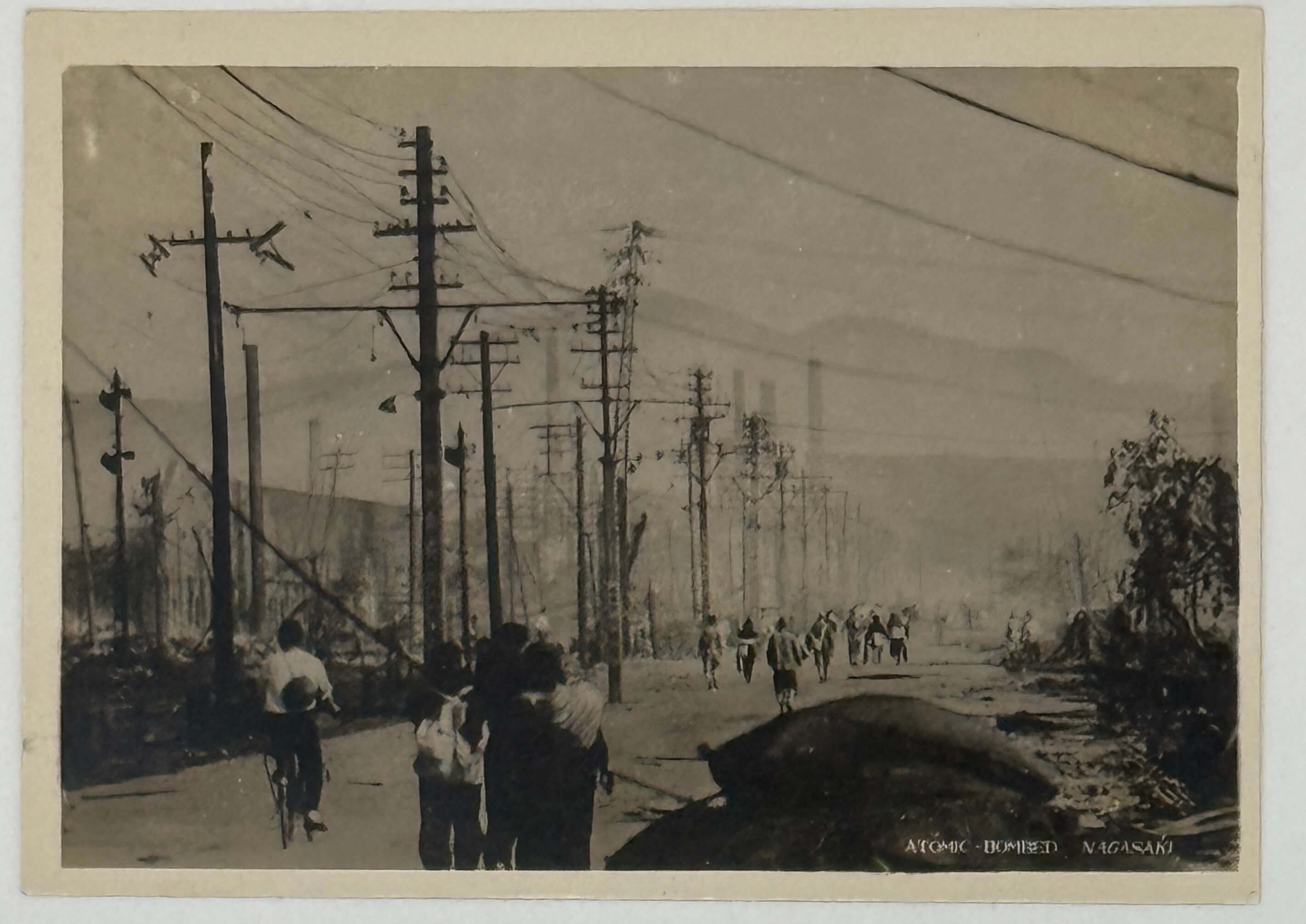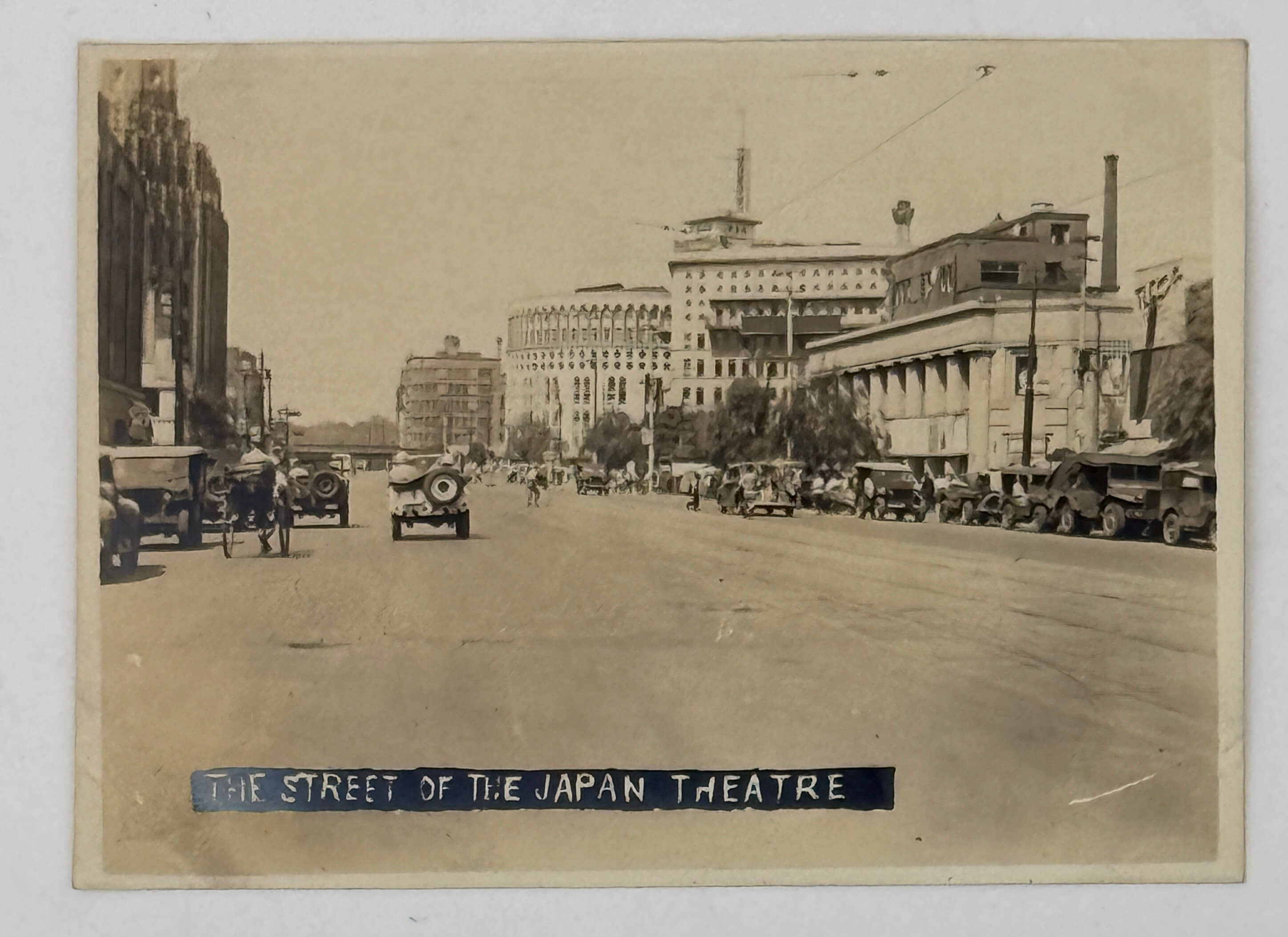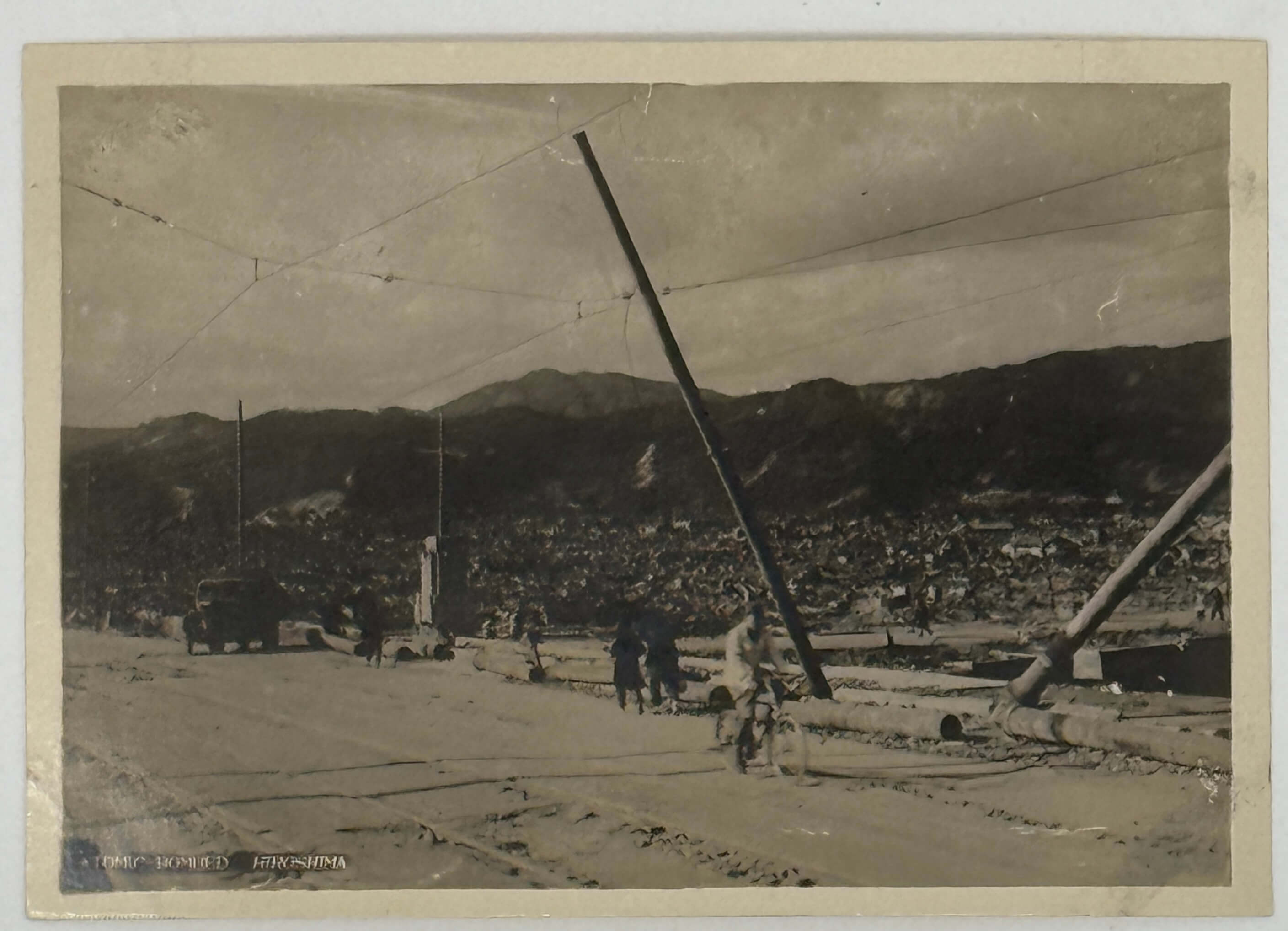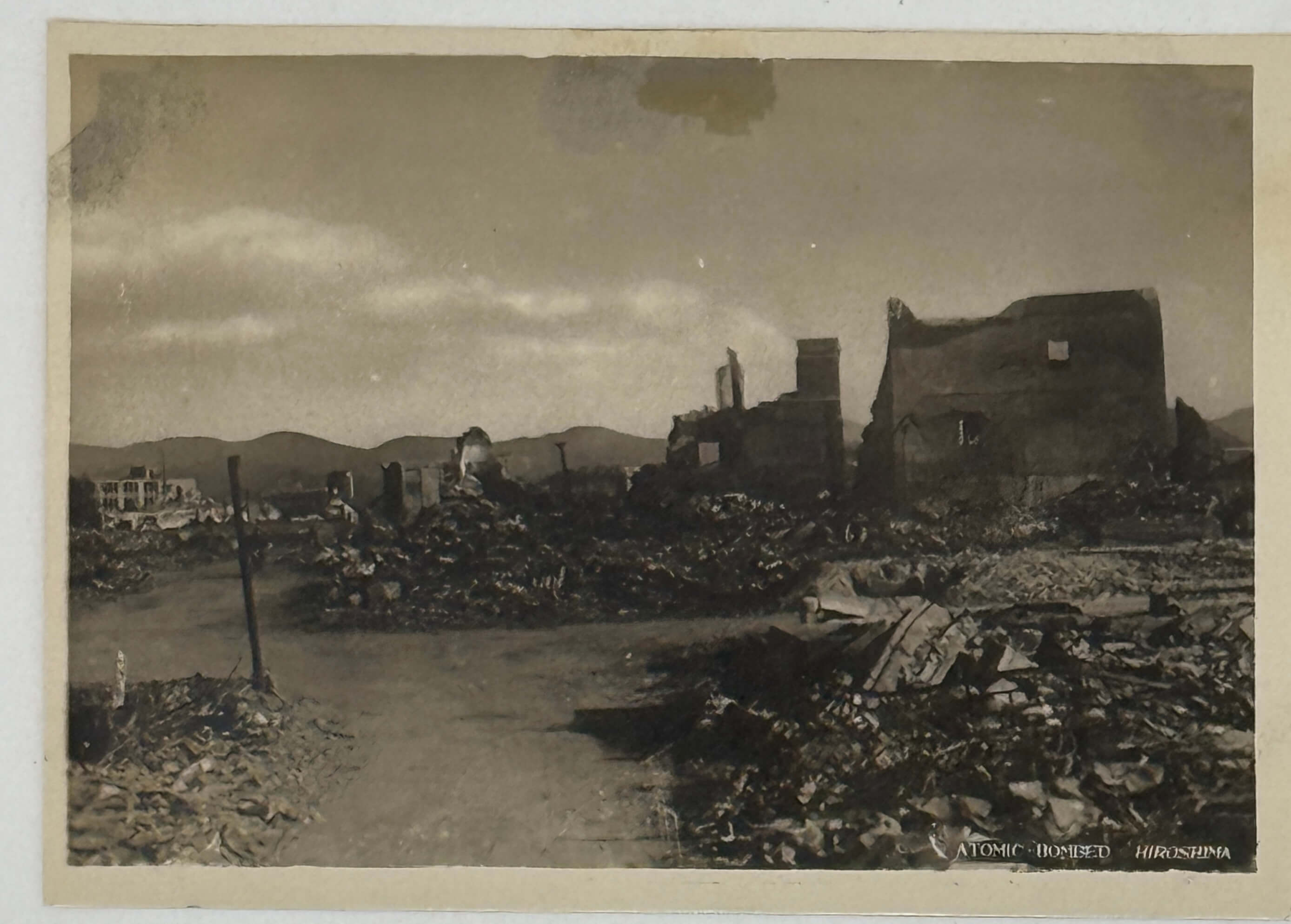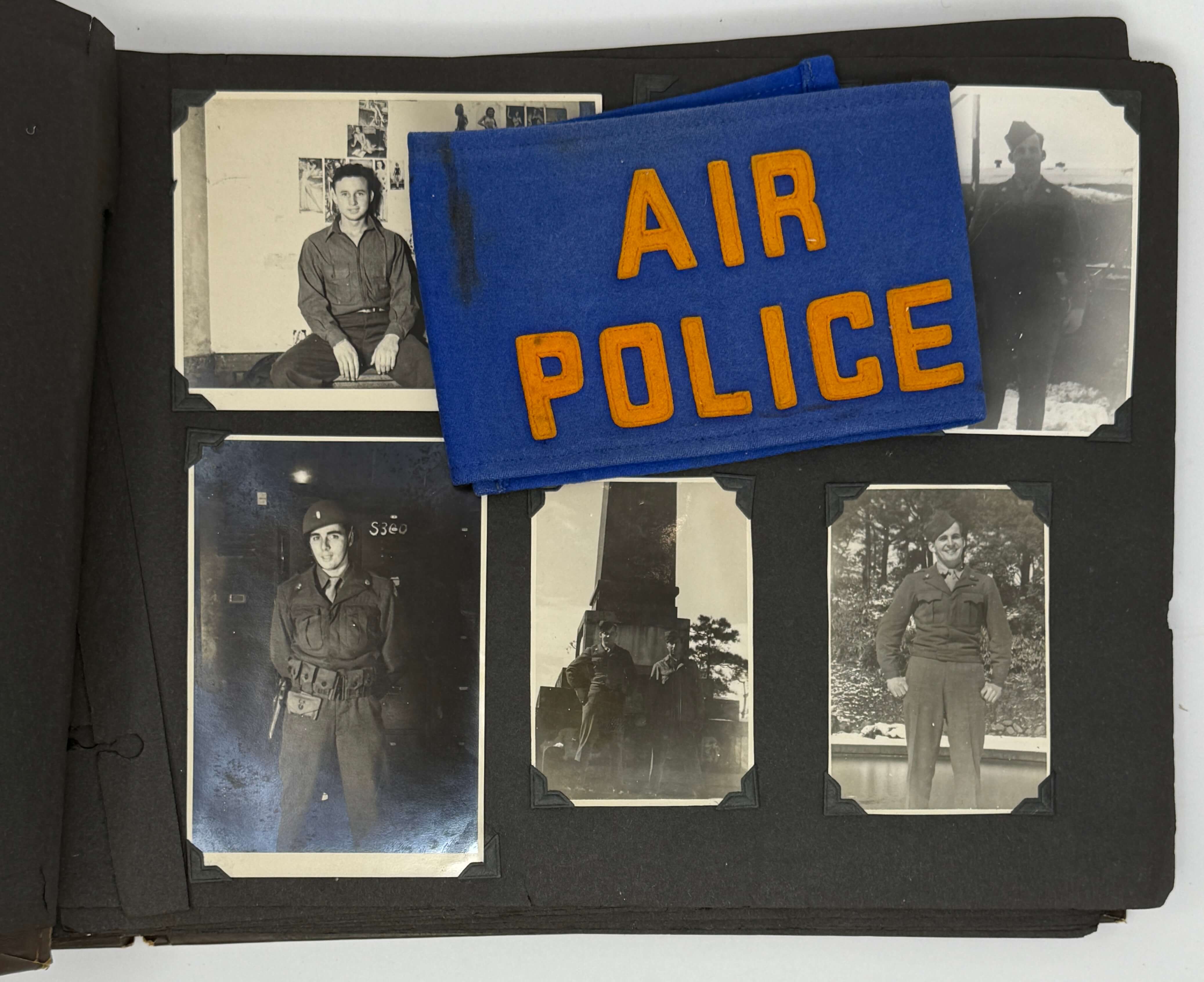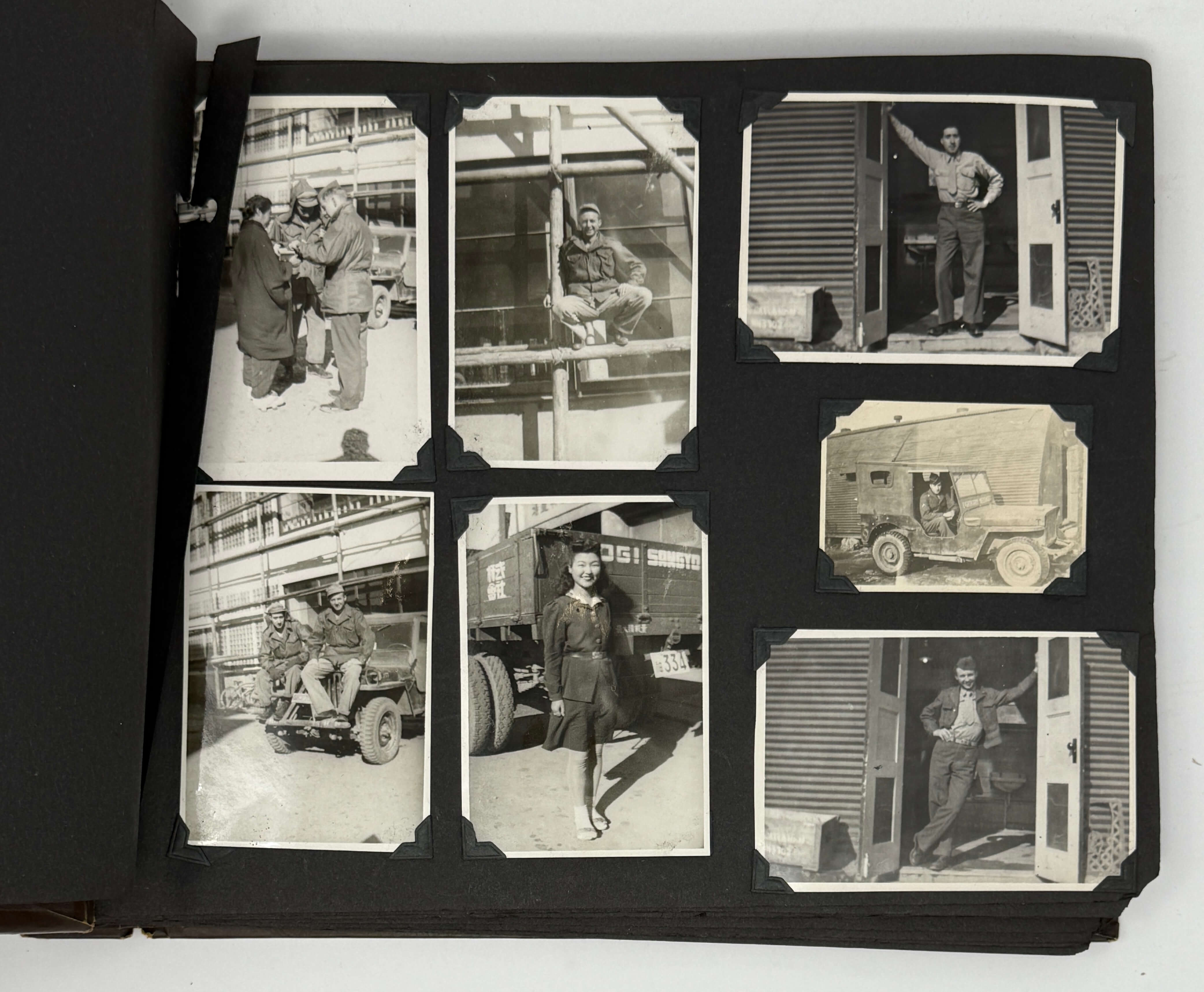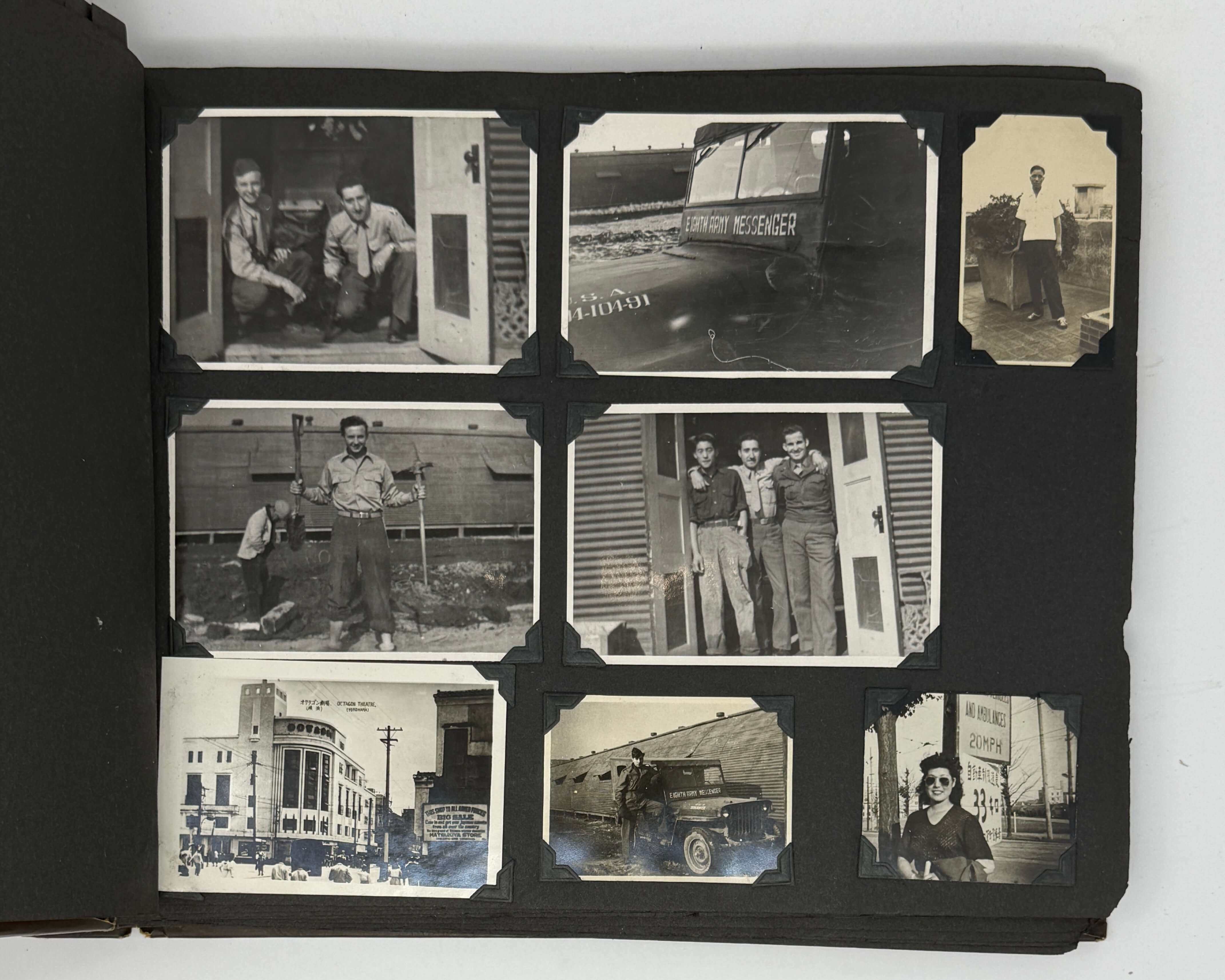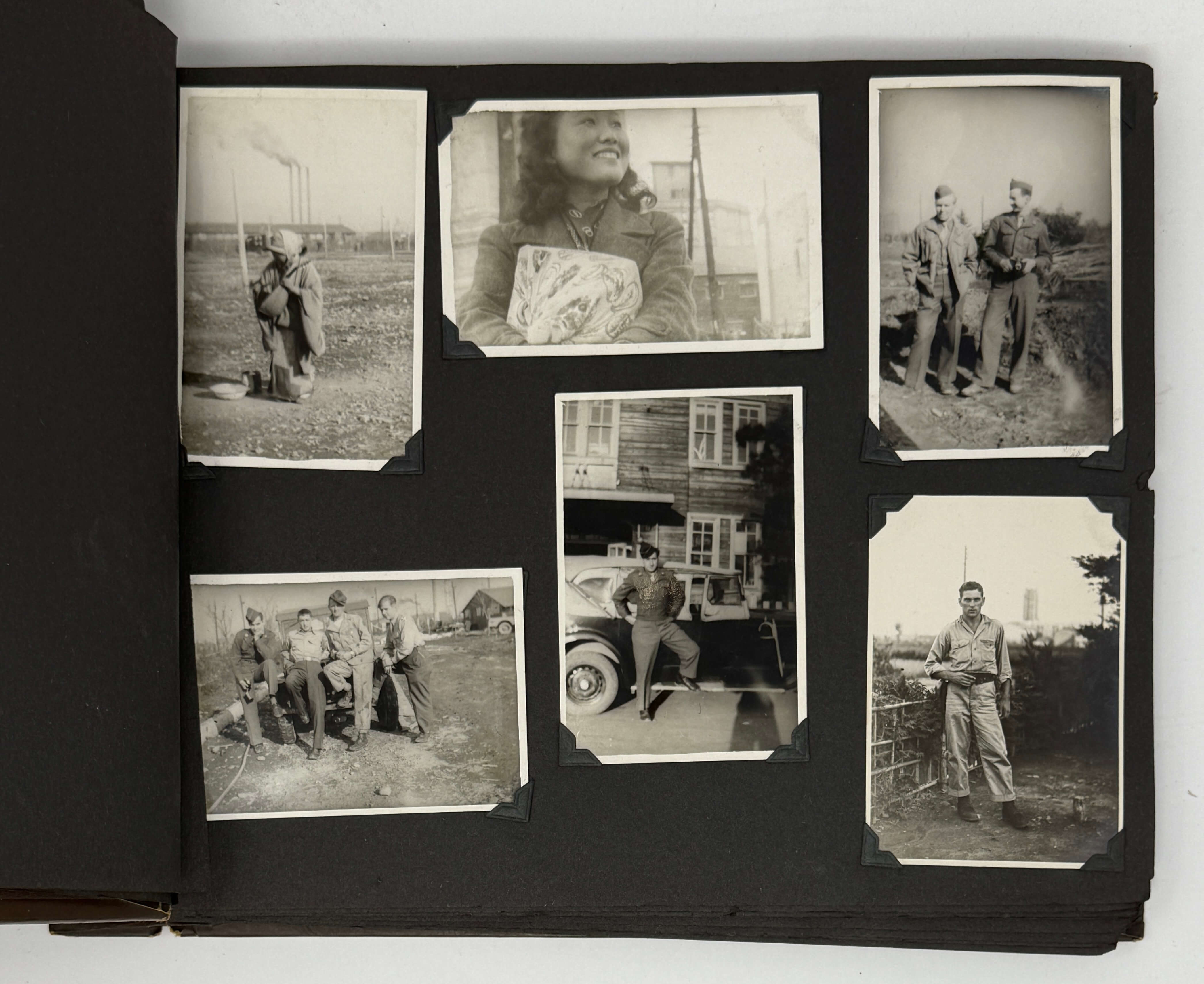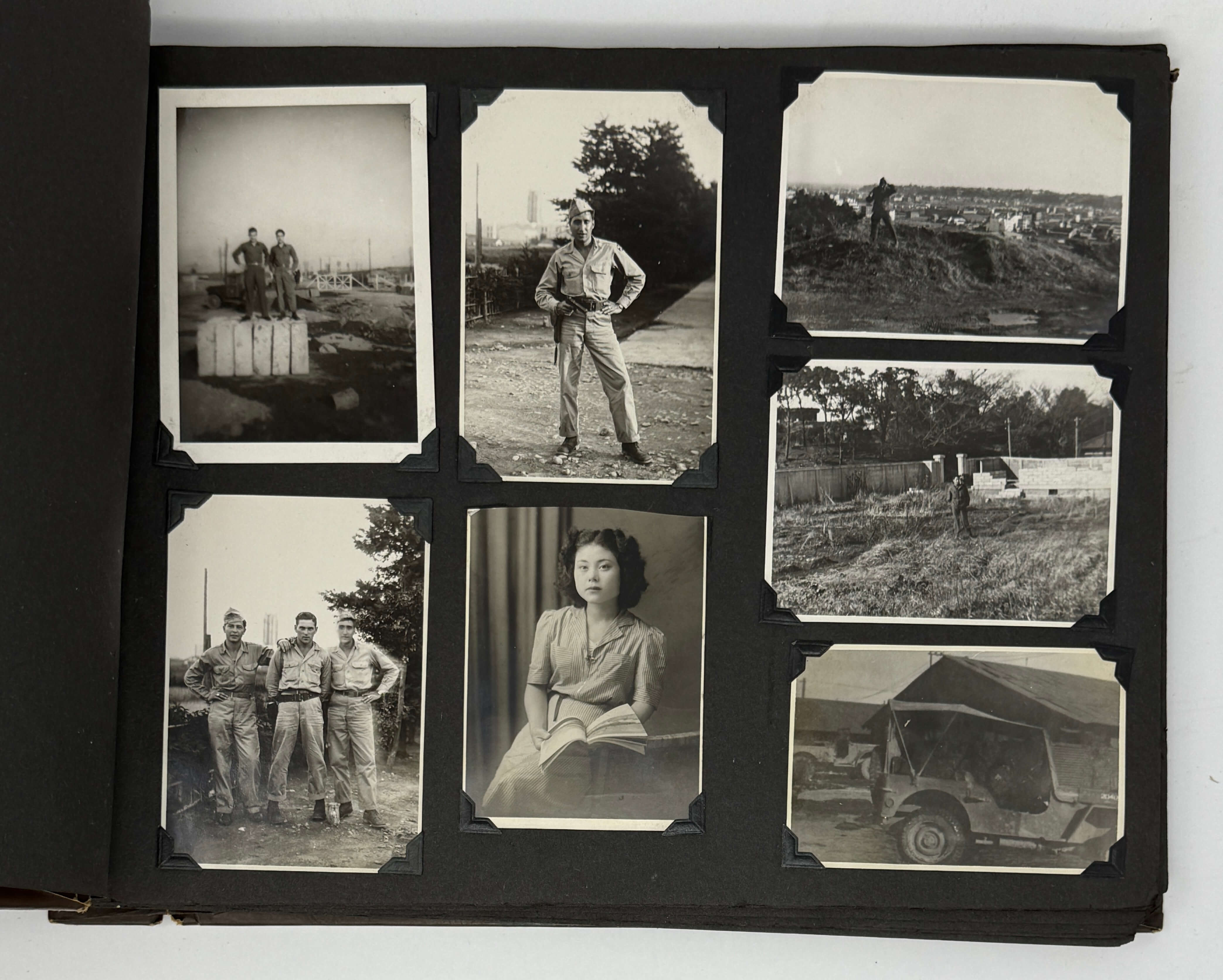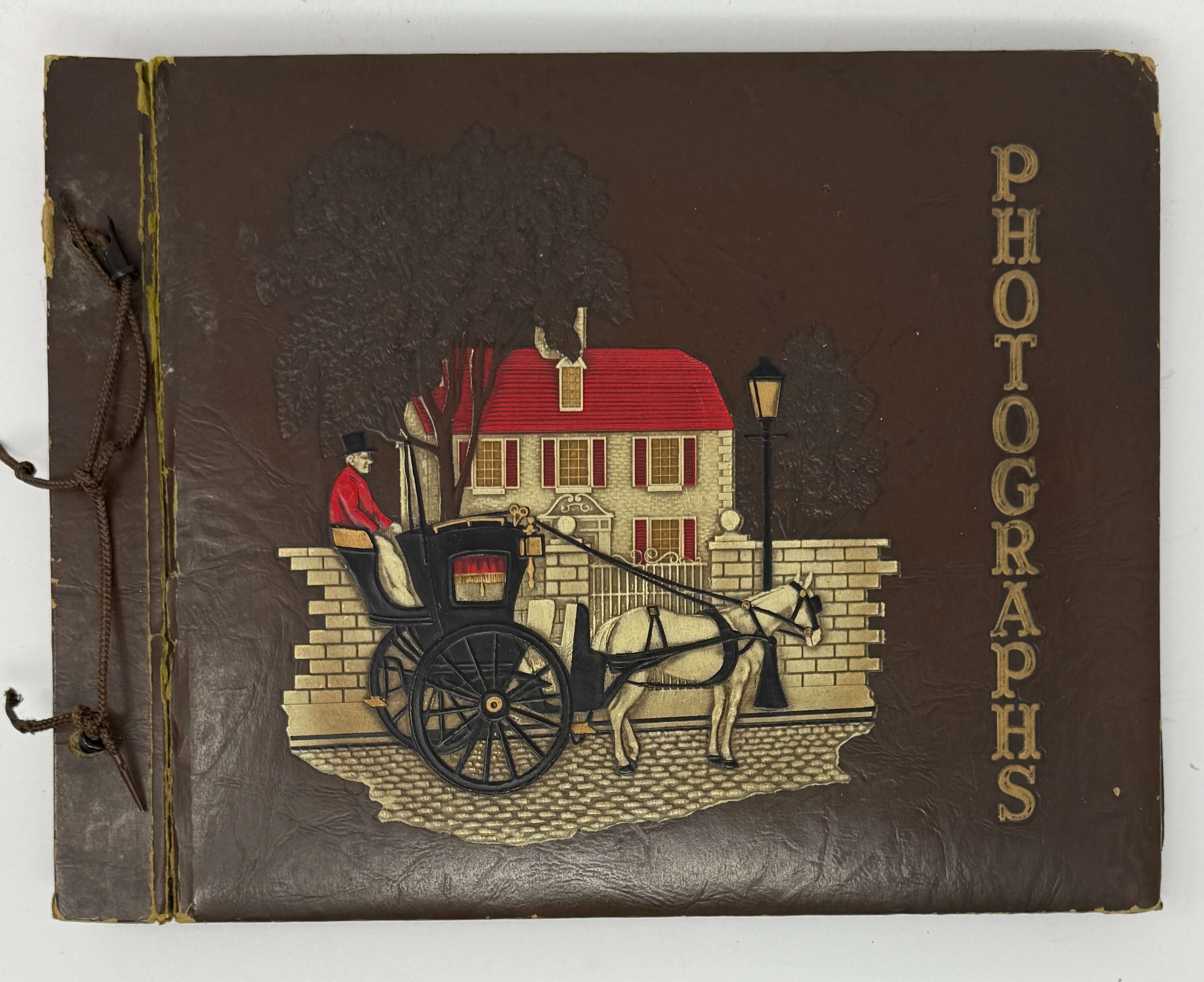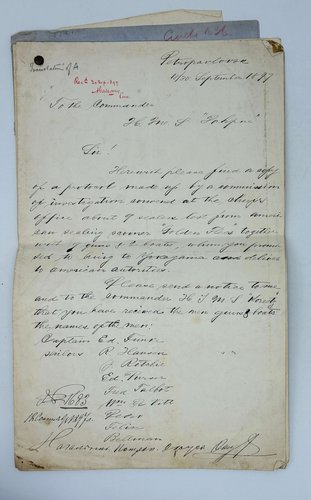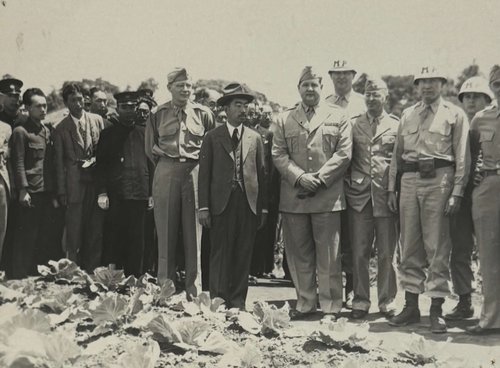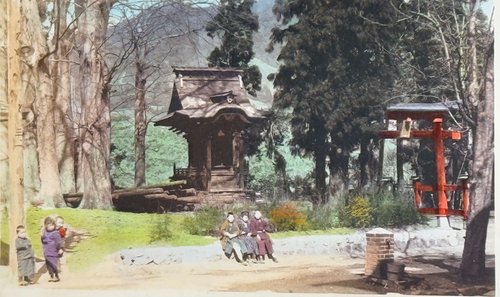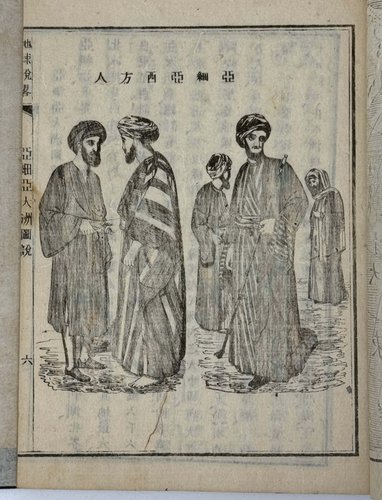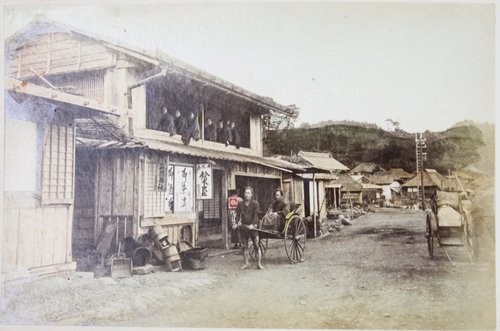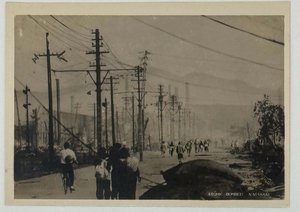
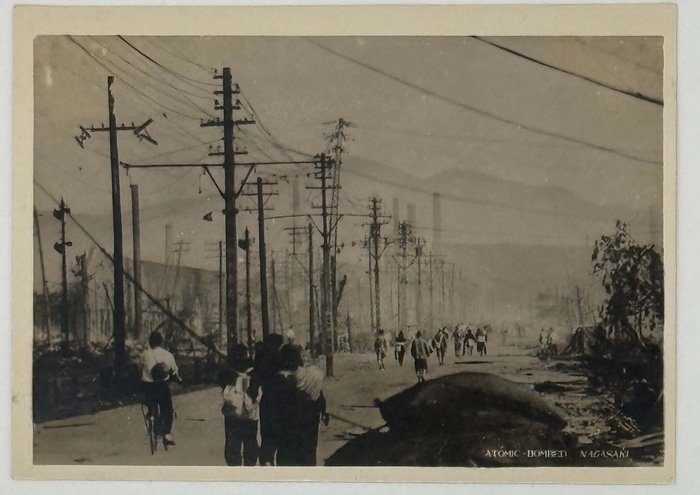
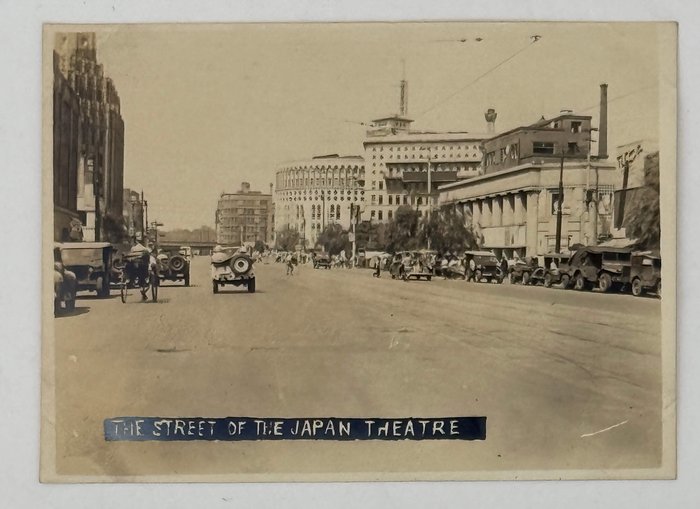
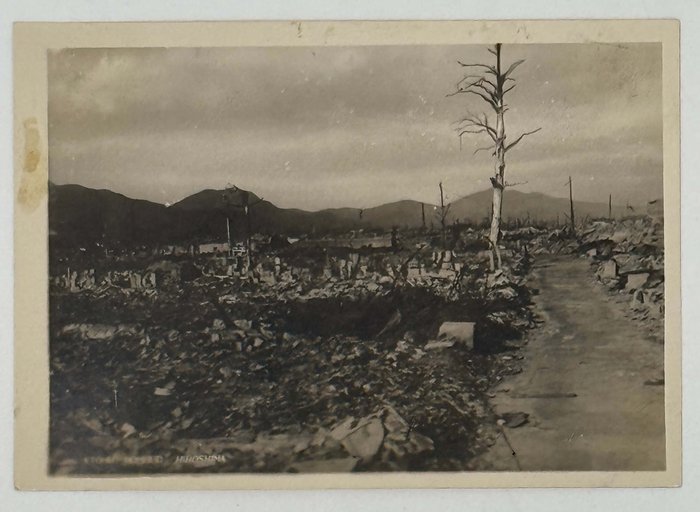
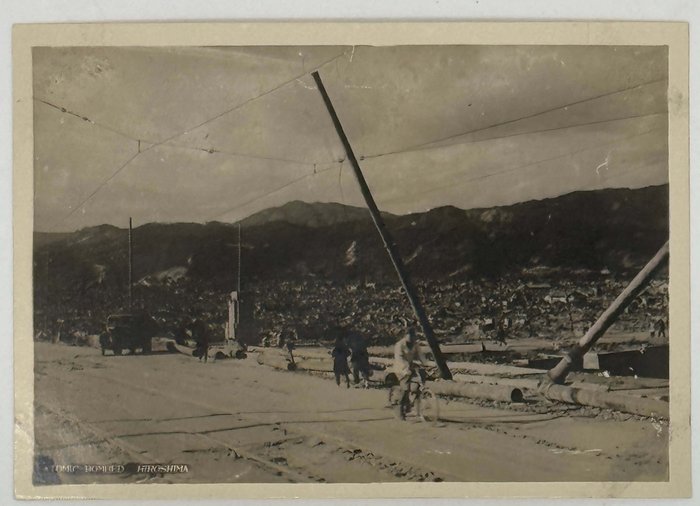
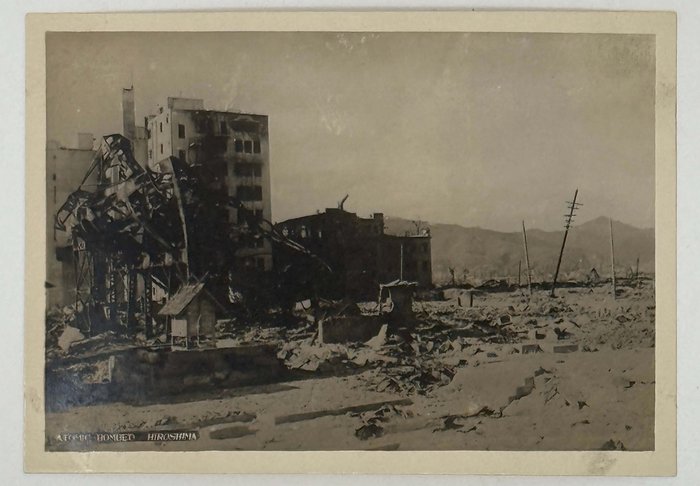
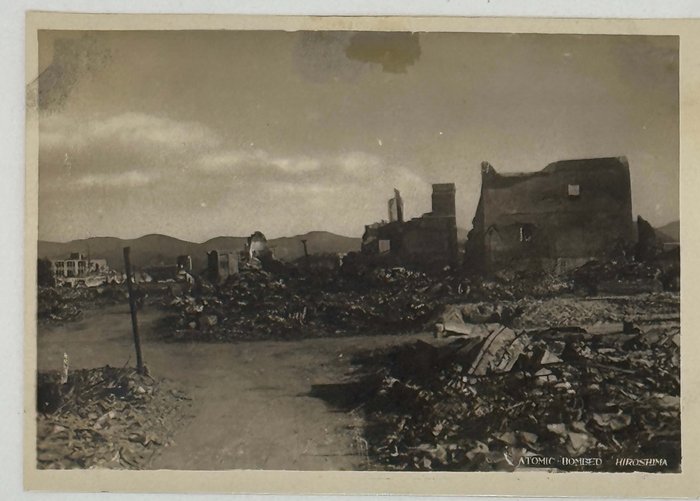
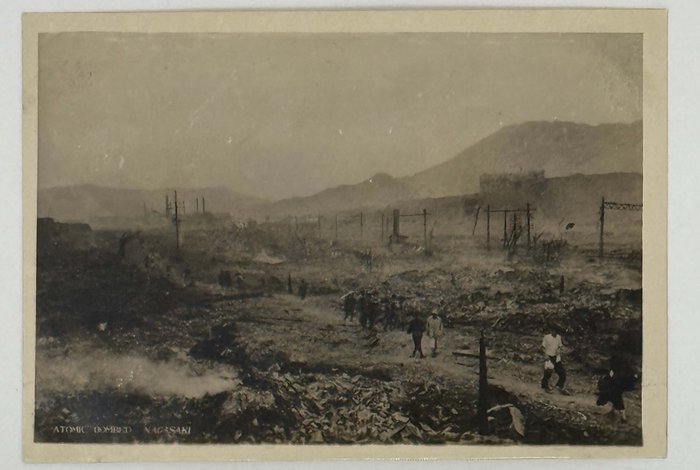
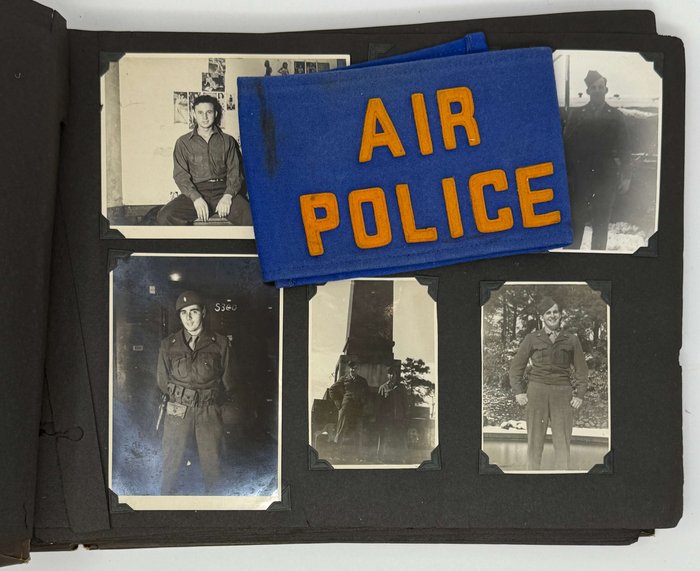
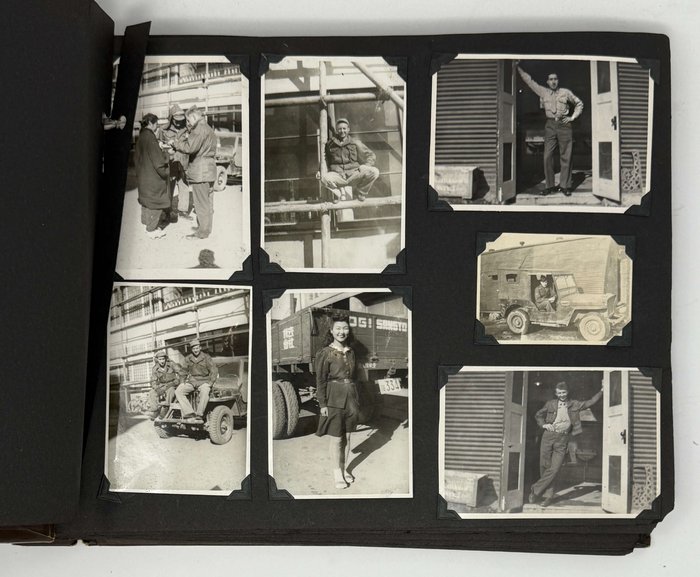
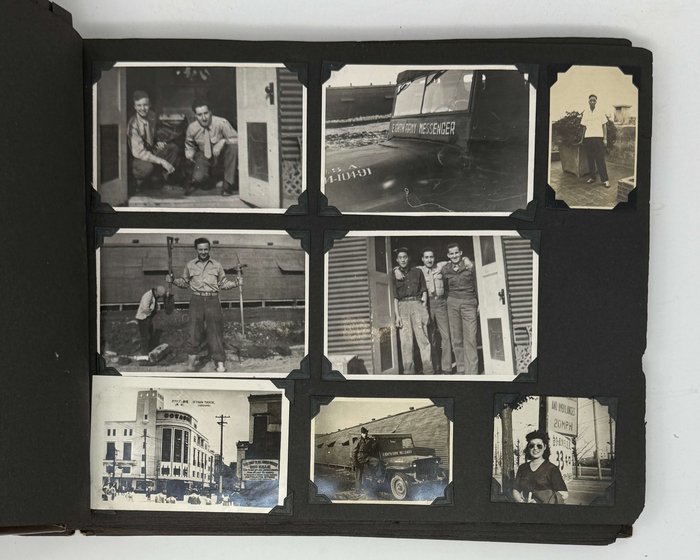
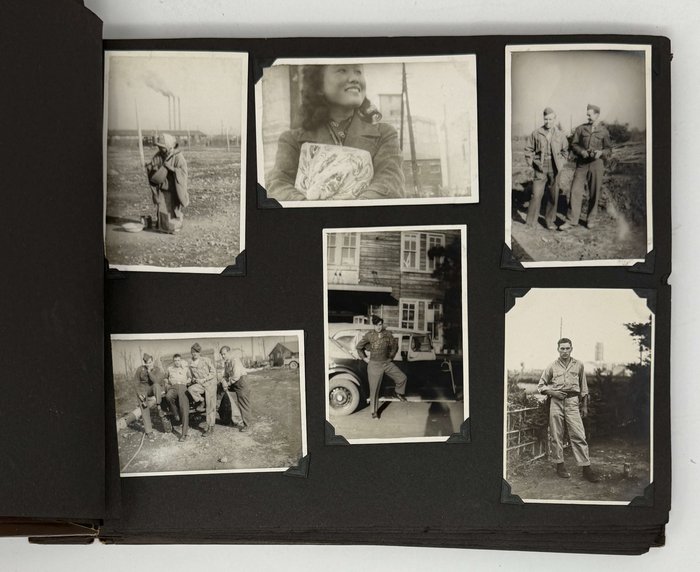
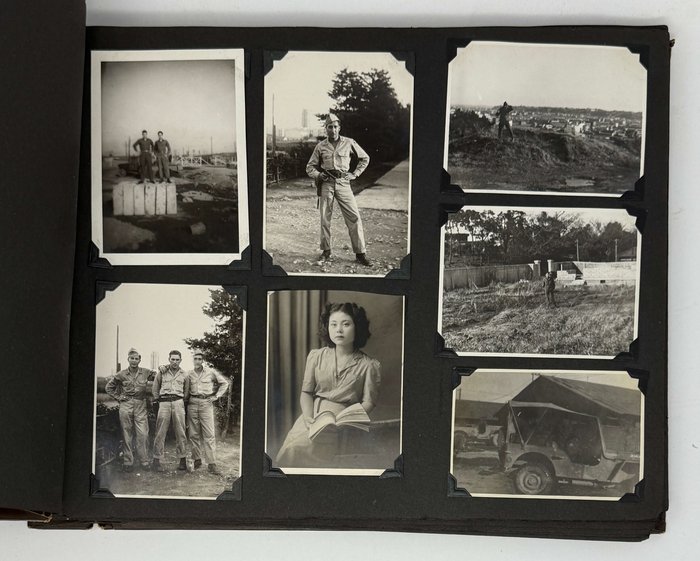
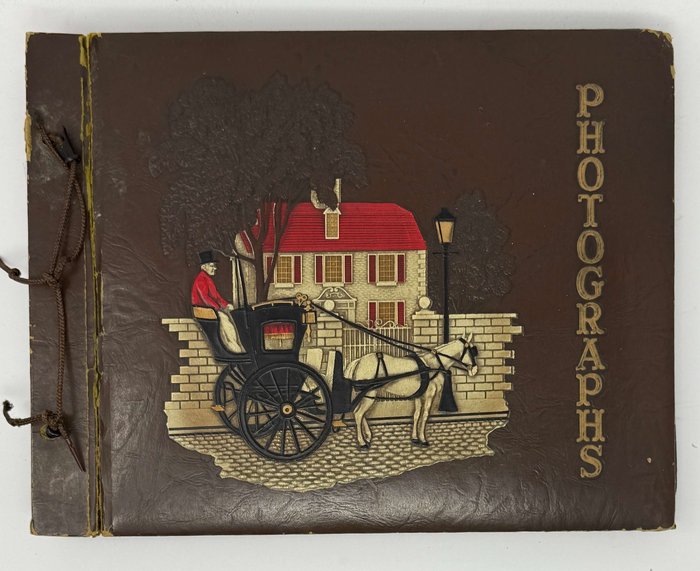
#PE10
Ca. 1945 – late 1940s
Oblong Folio album (ca. 26,5x34 cm or 10 ½ x 13 ¼ in). 40 black stock leaves (17 blank). With 121 mounted (in corners) original gelatin silver photos of various sizes (nine photos are colour-printed), from ca. 12,5x17,5 cm (5x7 in) to ca. 6x9 cm (2 ½ x 3 ½ in). Over thirty photos with captions in English in negative (sometimes with additional Japanese captions); over twenty photos with period ink captions on the mounts. With eleven loosely inserted gelatin silver photos, nine are ca. 7,5x10,5 cm (3 x 4 ½ in), with captions in negative; two smaller photos are ca. 5,5x8 cm (2 ¼ x 3 in). With a loosely inserted blue cloth "Air Police" armband ca. 10x45 cm (4 x 17 ½ in). Period brown faux leather album; front cover with a large gilt- and colour-stamped pictorial vignette depicting a horse-driven carriage at a brick-laid mansion. Binding rubbed on extremities, covers with cracks at hinges, several leaves detached from the stub and loosely inserted, overall a very good album with strong interesting photos.
An interesting, historically significant album, compiled by an American military man during his service in the Eighth U.S. Army Headquarters in Yokohama during the first years of the Occupation of Japan (September 2, 1945 – April 28, 1952) at the end of WW2.
Over fifty photos portray the album's compiler and his fellow servicemen, posing on the grounds of their military camp in Yokohama, inside their quarters, out on Japanese streets, in a military Jeep with the sign "Eighth Army Messenger," with pistol guns, in boxing attire, partying with their American girlfriends, &c. Several handwritten captions identify the people and locations: "my buddy [Stenton?] trying to imitate a monkey,” "my buddies [Stenton?] & Dyer at camp,” "here I am beside a Jap car in Yokohama, Japan,” "some of my buddies from left: May, West, Kenny & […?] at camp,” "me & my buddy May at camp,” "my buddy [Stenton?] & myself, notice the messenger log in his left arm,” "my buddies Saltino & May looking at the same girl I took the picture,” "my buddy May & myself in Jokohama, Japan; I have a camera now, it cost me 2000 yen & 350 yen for case, it's a beauty too." A colour-printed photo at the rear of the album portrays the compiler posing at a Christmas tree.
There are also several lively amateur portraits of Japanese people - girls in Western clothes and passers-by on the street ("an old Jap lady who always [play?] at the same spot in Yokohama,” "some Jap girl we took a picture of, nice hun,” "a picture of some Japs walking along a market street in Yokohama, Japan"). A portrait of a Japanese girl in a Western dress bears her pencil inscription in English and Japanese on the verso ("Izuku Minowa"). Other snapshot photos show a street procession, a sign of "Shinto Marriage Ceremonies Iseyama Shrine," street workers fixing a burst water pipe, Japanese children, &c.
Over a dozen studio photos of Yokohama (several with handwritten captions on verso) show "U.S. Army houses" (handwritten caption "this is how our huts look like"), the "Octagon Theatre" (handwritten caption "this is our movies' house in Yokohama about 2 blocks away from camp"), "American Red Cross Yokohama Club" (manuscript caption "place where I spend most of my leisure time"), U.S. 8th Army Headquarters (manuscript caption "this place is where I work at 8th army headquarters, 4th floor, Signal Center"), "Yokohama city seen from Nogeyama Park,” "Yokohama airport,” "Sakuragicho station" (handwritten caption "a station near camp"), harbour and port, piers with U.S. naval ships (visible sign of "U.S. Army Transport Wisteria"), railway station (manuscript caption "this is the main station in Yokohama"), Isezakicho district, British consulate, &c.
There are also several studio photos of Tokyo, including three views of the ruins after American air raids, images of Ginza Street with the Wako store, National Diet Building, Meiji Memorial Picture Building, Imperial Hotel (second building, 1923-1968), Meiji Building (Meiji Seimei Kan), Marunochi and Hibiya districts, "Finance Bldg., G.H.Q. and Dept. – Toranomon," Palace Heights residential area in Miyakezaka district, Imperial Palace grounds, &c. Other studio photos include three portraits of Japanese geishas (one with a handwritten caption, "this is how they dress in Japan, only a few have American dresses") and a series of views of Mount Fuji, the city of Kamakura and Tsurugaoka Hachimangu shrine.
The collection also includes nine rare images of atomic bomb destruction in Hiroshima and Nagasaki, which were forbidden for circulation in Japan and the United States during the American occupation of Japan. Five photos of destruction in Nagasaki reproduce the originals taken by Yōsuke Yamahata (1917-1966); four images of Hiroshima were probably taken after the ones by Eiichi Matsumoto (1915-2004).
Overall a historically interesting collection of original amateur and studio photos illustrating the life of a U.S. military man serving in Yokohama during the American occupation of Japan.

